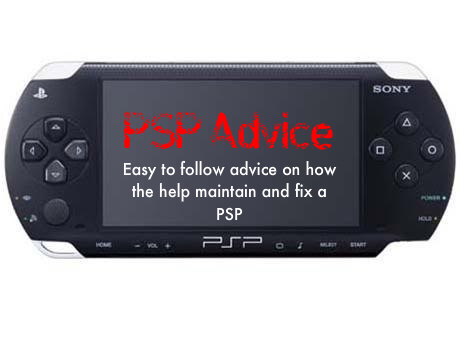Monday, August 23, 2010
Bricked PSP?
Generally if you have a bricked PSP, your Sony PlayStation Portable will still switch on, as in the green light shows but there will be no picture showing on the LCD screen and there will also be no sound. The green light will stay on for approximately 30-40 seconds and then shut down.
A PSP generally becomes bricked if it is turned off or runs out of battery during a firmware/software update. The best way the unbrick your PSP is to buy a Pandora battery and Magic Memory Stick. Using these two items you will then be able to unbrick/reboot your PSP to full working order. If you have any questions regarding unbricking a PSP or where to purchase Pandora Batteries and Magic Memory Sticks from please email me.
Sunday, August 22, 2010
PSP Advice - Removing The Power Switch Board
There are no screws attaching the power switch board to your PSP console, they simply click into place but there is one cable ribbon attached so please bear this in mind when removing. The only tool you will need is a small flathead screwdriver.
 First of all you need to take off the right hand shoulder button aswell as the metal clip in which holds down the rubber pad for said shoulder button. To remove the metal clip use your small flathead screwdriver and gently lift it up from where it connects to the PSP console.
First of all you need to take off the right hand shoulder button aswell as the metal clip in which holds down the rubber pad for said shoulder button. To remove the metal clip use your small flathead screwdriver and gently lift it up from where it connects to the PSP console.When that is done you should then be able (with flathead screwdriver again) start to gently prise the PSP power switch board away, there is a small gap in which you can put your screwdriver to slowly lift it up. Do not lift up fully as it still has a ribbon cable attached, slowly turn over to one side and undo the brown cable clip, therefore releasing the cable and releasing the power switch board from your PSP console.
Saturday, August 14, 2010
A Brief History Of The Sony PSP
The Sony PSP comes out on sale in Japan in October 2004 for ¥19,800 for the basic model and ¥24,800 for the value version. It sells 200,000 units on the first day.
In March 2005 the Sony PlayStation Portable launches in North America for $249, approximately $20 more than the Japanese price and $100 more than the Nintendo DS. 500,000 PSP units are sold in the first two days.
The UK version of the PSP is released (1000 series) in September of the same year for £179, at the time over $100 more than the US price. All 185,000 units sell out in the first three hours doubling the Nintendo DS record on launch.
In June 2007 the next generation of Sony's PSP is announced (2000 series) as the 33% lighter, 19% thinner PSP-2000 and is the first of the Slim and Light series. It supports USB charging, has a composite TV-out and twice the RAM taking the memory up to a healthy 64MB. The screen is brighter and the UMD speedier to load.
In September 2007 the Sony PlayStation Portable-2000 series goes on sale worldwide.
The PSP-3000 is announced in August 2008. The 3000 series is virtually identical to the previous 2000 series version, but does feature an improved LCD screen with a better contrast, a faster response time and an anti-reflective coating.
In October 2008 The PSP-3000 series version goes on sale worldwide
The new PSP Go officially launched in June 2009, the latest Sony PSP version comes with Blue tooth, a smaller 3.8-inch screen and at 43% lighter than the original PlayStation Portable. The UMB has vanished and instead is replaced by 16GB of internal flash memory for digital downloads plus a Memory Stick Micro port.
In October 2009 the PSP Go is released in the US and the UK.
In March 2010, 60 million PSP units reported sold worldwide in total making this console a true global phenomen.
The PlayStation Go is the fourth model / version of Sony's hugely successful console and with technology changing all the time it will be interesting to see what Sony can come up with next for the PSP.
